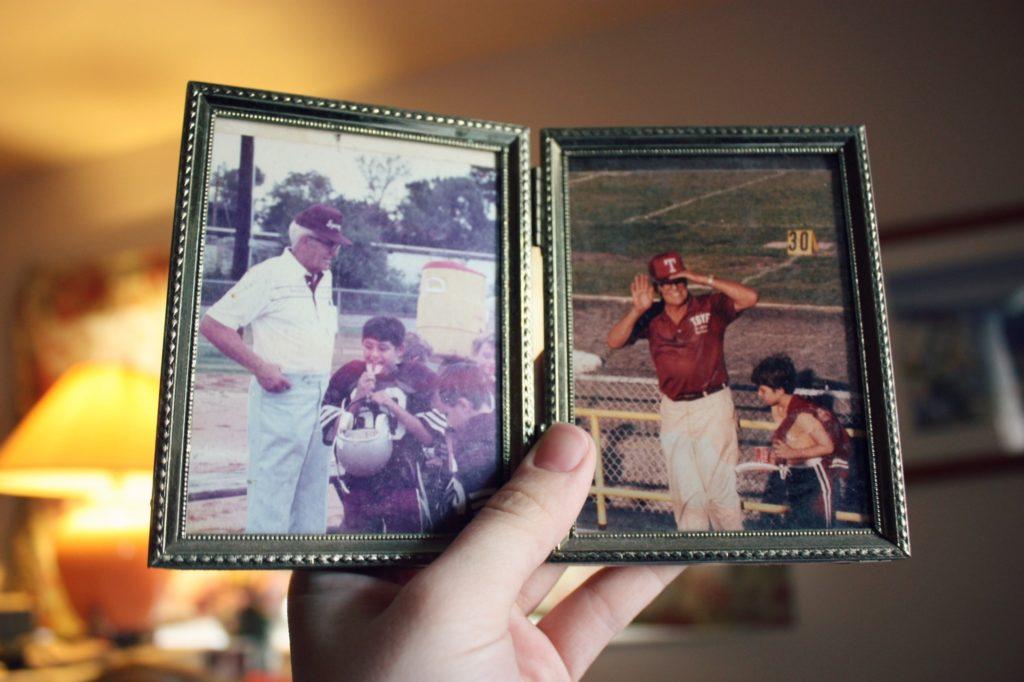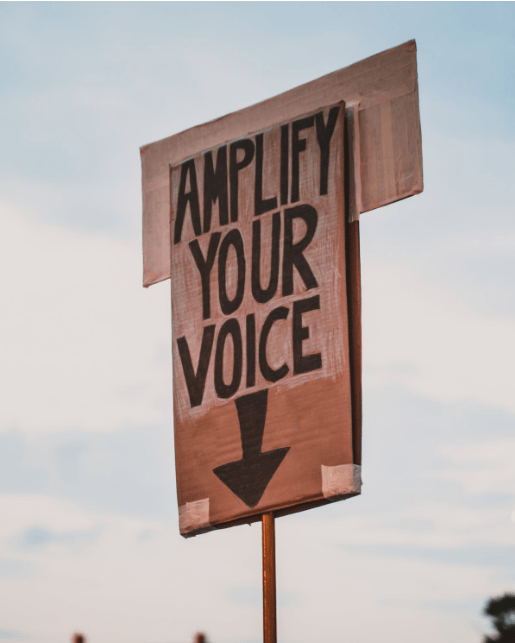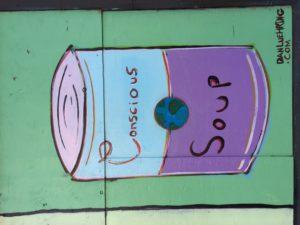 I had a fundraising post all ready to launch today, but I just couldn’t do it.
I had a fundraising post all ready to launch today, but I just couldn’t do it.
The world seems wildly out of whack right now. I can’t pretend it’s business as usual.
I try to stay away from “politics,” because I know that’s not why you read my blog. However, we live in a political world. And so do our nonprofits, our staff, our volunteers, our donors and our clients. Simply put, politics is about making agreements between people so that they can live together in groups.
Nonprofits cannot seal themselves off in little bubbles, pretending what’s happening in the rest of the world doesn’t exist.
That’s why, during the pandemic, I encouraged you to talk about how events touch those who rely on you. It’s why, all the time, I encourage you to relate your work to what’s in the news and top of mind to donors. Be it hurricanes, fires, famine, drought, social unrest, war, civil liberties, mass shootings, homophobia, racism, sexism, bigotry, or anything else horrifying to body, mind, heart and soul.
If it’s something you’re thinking about, you can bet it’s something your constituents are thinking about.
If you don’t address it, you risk coming across as unimportant, blind, shallow or out of touch. Being relevant, and meaningful, means getting inside your supporters’ heads and knowing what’s important to them. What are they thinking? How are they feeling? In what way do the emotions they’re currently experiencing interact with your mission? How can they help you, and you help them?
I don’t know how you’ve been feeling, but many folks I’ve been talking to have mentioned anger, outrage and fear. Even those who are happy about one or two things are deeply concerned about other developments. And this holds true for both sides. Listen to Fox News, then listen to MSNBC. You’ll hear equal doses of horror. The pendulum has been swinging wildly, back and forth, and the world seems madly out of whack.
What can the social benefit sector do to bring things back into balance?
I keep coming back to the Golden Rule. What if none of us ever did anything to anyone else we didn’t want them to do unto us? What if we only treated others as we would want to be treated? It seems so simple. So logical. So in everyone’s best interest.
What is it about the human animal that leads the same people who don’t want government to impose mask or vaccine mandates on them wanting to impose no abortion mandates on others? Or, from the other perspective, those who don’t want government telling them they can’t smoke pot wanting to tell others they can’t carry guns? All of this “I can impose, but you can’t” is nonsense from the perspective of “do unto others.” Yet, we persist.
The only way to make sense of these things is through an understanding of balance. We must strive toward philanthropy (translated as “love of humanity”).
 Have you started working on your annual appeal and year-end fundraising plan?
Have you started working on your annual appeal and year-end fundraising plan?
 This year Giving Tuesday is November 29th. So, soon.
This year Giving Tuesday is November 29th. So, soon.
 In
In 
 You’ve got one month before fall fundraising season begins in earnest.
You’ve got one month before fall fundraising season begins in earnest. Babies can teach you the same thing.
Babies can teach you the same thing.

 You bet!
You bet!




 I had a fundraising post all ready to launch today, but I just couldn’t do it.
I had a fundraising post all ready to launch today, but I just couldn’t do it.
 Here’s the deal: When you match people to environments or roles congruent with their skills, knowledge and strengths, they’ll do better.
Here’s the deal: When you match people to environments or roles congruent with their skills, knowledge and strengths, they’ll do better.
 What I have for you is something you can do this week (or you can pick another week on your calendar that isn’t already overfilled with appointments, assignments, meetings and what-not). It’s really simple and really powerful. There’s one catch: you have to put aside 45 minutes/day for five days. If you’re resistant to change, read no further. This post isn’t for you. If, however, you have a hunch you might be able to move from good to great, then… read on (oh, and there’s a little bonus ‘gift’ at the end).
What I have for you is something you can do this week (or you can pick another week on your calendar that isn’t already overfilled with appointments, assignments, meetings and what-not). It’s really simple and really powerful. There’s one catch: you have to put aside 45 minutes/day for five days. If you’re resistant to change, read no further. This post isn’t for you. If, however, you have a hunch you might be able to move from good to great, then… read on (oh, and there’s a little bonus ‘gift’ at the end).





 I’m excited to share three easy tips with you, and the results are measurable. Do these things and you’ll be able to tell if they impact your bottom line!
I’m excited to share three easy tips with you, and the results are measurable. Do these things and you’ll be able to tell if they impact your bottom line!




 For this year’s appeal, are you shooting from the hip?
For this year’s appeal, are you shooting from the hip?



 TRUTH BOMB:
TRUTH BOMB:
 I know you’re working on calendar year-end fundraising right now.
I know you’re working on calendar year-end fundraising right now.
 Whatever side of the political spectrum you’re on, the photo below is triggering.
Whatever side of the political spectrum you’re on, the photo below is triggering. The modern model is more like a vortex — an energized circle where everyone is equal. People move in and out as needed, and your job is to keep the energy flowing.
The modern model is more like a vortex — an energized circle where everyone is equal. People move in and out as needed, and your job is to keep the energy flowing.
 What motivates someone to make a major philanthropic gift?
What motivates someone to make a major philanthropic gift?
 I’ve created for you a little “Declaration of Fundraising Independence” to help you become a fruitful philanthropy facilitator from this day forward.
I’ve created for you a little “Declaration of Fundraising Independence” to help you become a fruitful philanthropy facilitator from this day forward.
 Legacy gifts don’t fall from the sky.
Legacy gifts don’t fall from the sky.
 Text messaging is becoming an increasingly important fundraising tool. Why? One of the reasons is U.S. adults now spend 10.5 hours/day consuming media. With all the competition for your donors’ attention, there’s a need to cut through the clutter.
Text messaging is becoming an increasingly important fundraising tool. Why? One of the reasons is U.S. adults now spend 10.5 hours/day consuming media. With all the competition for your donors’ attention, there’s a need to cut through the clutter.
 What do you most need to sustain your nonprofit through thick and thin?
What do you most need to sustain your nonprofit through thick and thin? No one can do it alone, sitting in their own little corner.
No one can do it alone, sitting in their own little corner.
 Trust defines the credibility and legitimacy not only of your organization, but of the entire social benefit sector. Yet too few organizations make the effort to operationalize this construct into their fundraising and marketing planning.
Trust defines the credibility and legitimacy not only of your organization, but of the entire social benefit sector. Yet too few organizations make the effort to operationalize this construct into their fundraising and marketing planning.


 Ever have a well-meaning, yet perhaps overly controlling or risk-aversive, boss say to you:
Ever have a well-meaning, yet perhaps overly controlling or risk-aversive, boss say to you:
 You’ve no doubt become familiar by now with the term “
You’ve no doubt become familiar by now with the term “
 You want to raise money with your fundraising appeal, right?
You want to raise money with your fundraising appeal, right?
 Giving is an emotional experience. It deserves an emotional response.
Giving is an emotional experience. It deserves an emotional response.
 One of my pet peeves as a donor is making a contribution (via a peer-to-peer request or tribute gift in honor or memory) in support of a friend; then receiving nothing but a form receipt.
One of my pet peeves as a donor is making a contribution (via a peer-to-peer request or tribute gift in honor or memory) in support of a friend; then receiving nothing but a form receipt.


 When I think about nonprofit content marketing, one of my favorite marketing strategists is Jay Baer, author of
When I think about nonprofit content marketing, one of my favorite marketing strategists is Jay Baer, author of 

